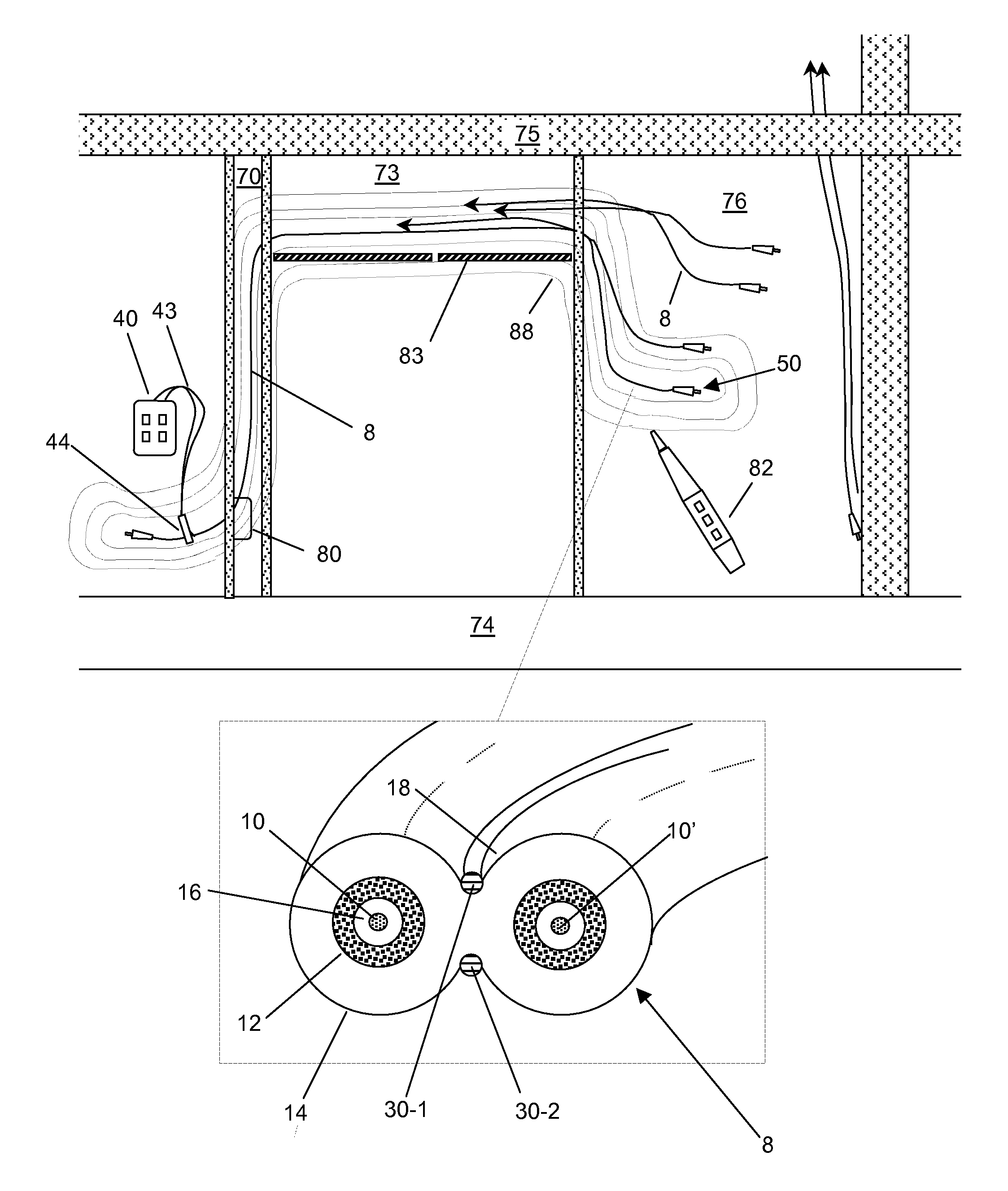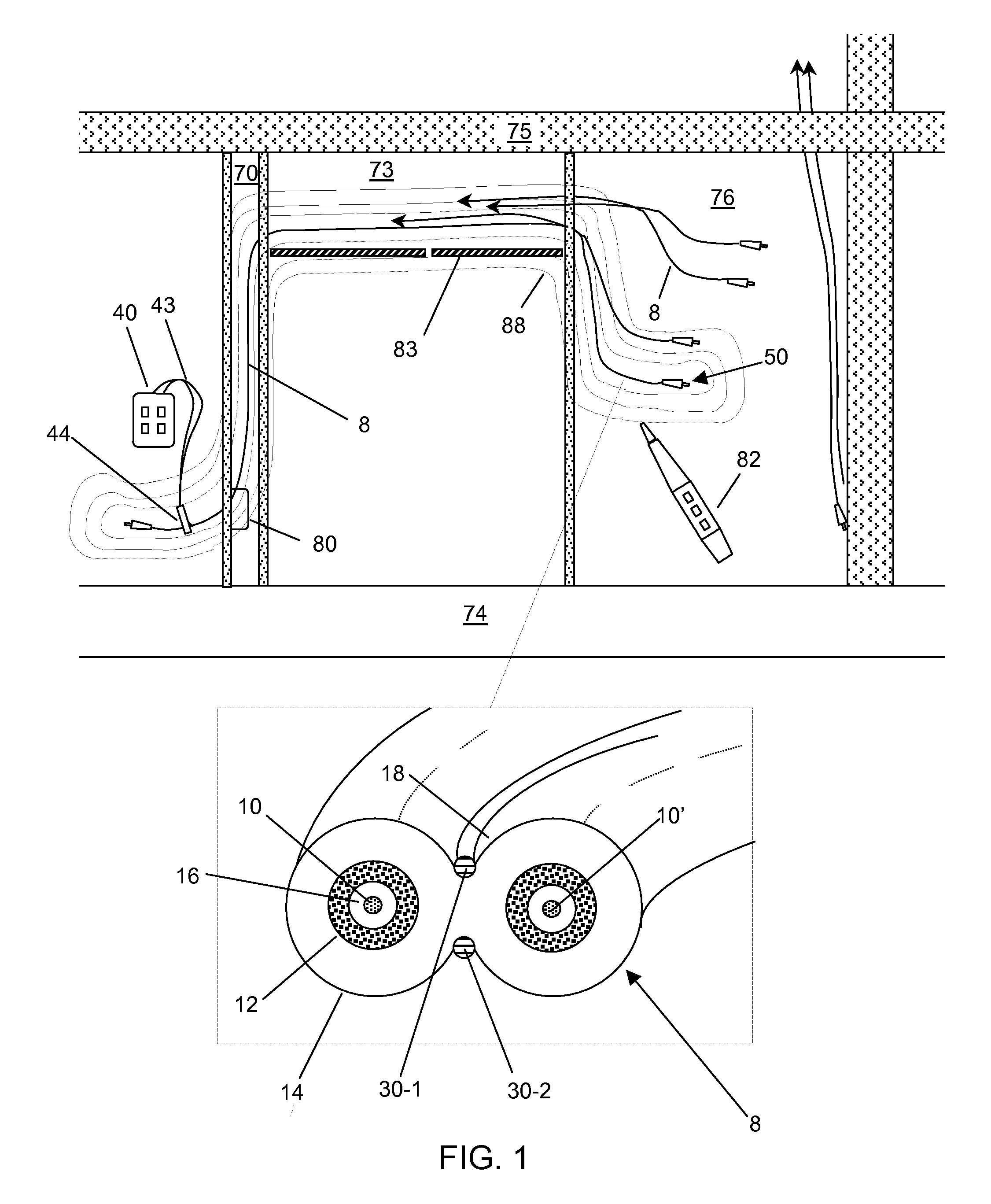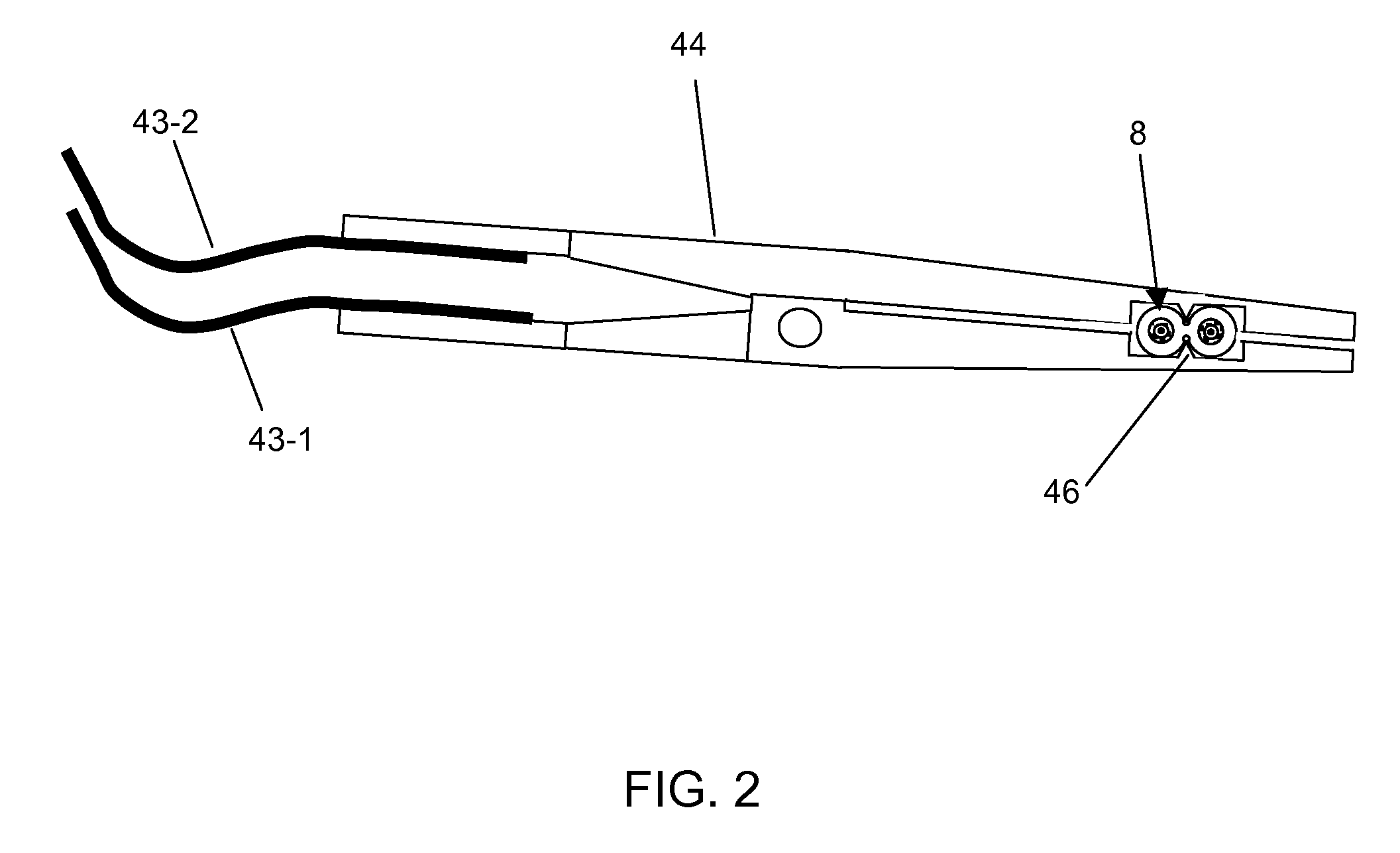Electrically Traceable and Identifiable Fiber Optic Cables and Connectors
a technology of fiber optic cables and connectors, which is applied in the field of optical fiber cables and systems, can solve the problems of ineffective electronic tone tracing techniques for locating fiber optic cables, difficult non-invasive access, and inability to locate conductors embedded in cable jackets, etc., and achieves the effect of convenient contact and quick locating and identifying
- Summary
- Abstract
- Description
- Claims
- Application Information
AI Technical Summary
Benefits of technology
Problems solved by technology
Method used
Image
Examples
Embodiment Construction
[0020]In this invention, we disclose electrically traceable and identifiable fiber optic cables including one or more externally accessible conductive elements disposed within one or more concavities in the outer surface of the cable jacket, the concavities being longitudinally coextensive with the cable length and parallel or spirally arranged relative to the internal optical fiber. Electrical isolation of these uninsulated conductors, when in contact with other conductive elements, is maintained by fixedly attaching each conductor to a channel region bounded above by a tangential surface joining high points on the cable jacket surface and below by the depression in the cable jacket surface. The electrical isolation resulting from this structure prevents stray electrical conduction between adjacent conductive surfaces or bodies, such as other cables or grounded conduits, while enabling non-invasive electrical contact to the conductor(s) at any point along the length of the cable. T...
PUM
 Login to View More
Login to View More Abstract
Description
Claims
Application Information
 Login to View More
Login to View More - R&D
- Intellectual Property
- Life Sciences
- Materials
- Tech Scout
- Unparalleled Data Quality
- Higher Quality Content
- 60% Fewer Hallucinations
Browse by: Latest US Patents, China's latest patents, Technical Efficacy Thesaurus, Application Domain, Technology Topic, Popular Technical Reports.
© 2025 PatSnap. All rights reserved.Legal|Privacy policy|Modern Slavery Act Transparency Statement|Sitemap|About US| Contact US: help@patsnap.com



